What is kanna? Some say the botanical has similar effects to MDMA, or ecstasy. Others find it to be an effective natural way to destress and improve mood.
If you’re a fan of exploring your mind and have been following the subculture lately, you probably want to keep reading as we delve deep into the world of using the botanical kanna, its purported benefits, and everything else you need to know about this fascinating African medicinal and functional food plant.
What is Kanna?
Sceletium tortuosum, also commonly known as kanna, or kougoed, is a succulent plant native to South Africa. This perennial herb is characterized by its sprawling growth and bright yellow flowers, making it a visually stunning addition to the arid landscapes where it thrives.
The plant’s roots and leaves have been used for centuries by indigenous communities, highlighting its long-standing role in traditional medicine. Historically, it was used by the San and Khoi people of Southern Africa.
These communities would often smoke or grind the plant matter in their teeth, or make tea from the fermented plant matter for its proposed mood-enhancing properties. It has also been used historically in spiritual and social rituals, signifying its deep cultural importance in these societies.
The name “kanna” has its roots in the Khoi language, translating to ‘something to chew’. This name reflects the traditional method of consumption, which is still common today, especially in the plant’s indigenous regions.
The other main moniker, ‘kougoed’, translates roughly to “chewable”, further emphasizing its historical usage. The origins of this botanical date back over 1000 years, with archaeological evidence suggesting that the plant has been used since prehistoric times.
Despite its ancient roots, it remains relatively unknown outside of South Africa. However, with a growing interest in natural remedies worldwide, this unique plant is slowly gaining recognition for its potential therapeutic properties.
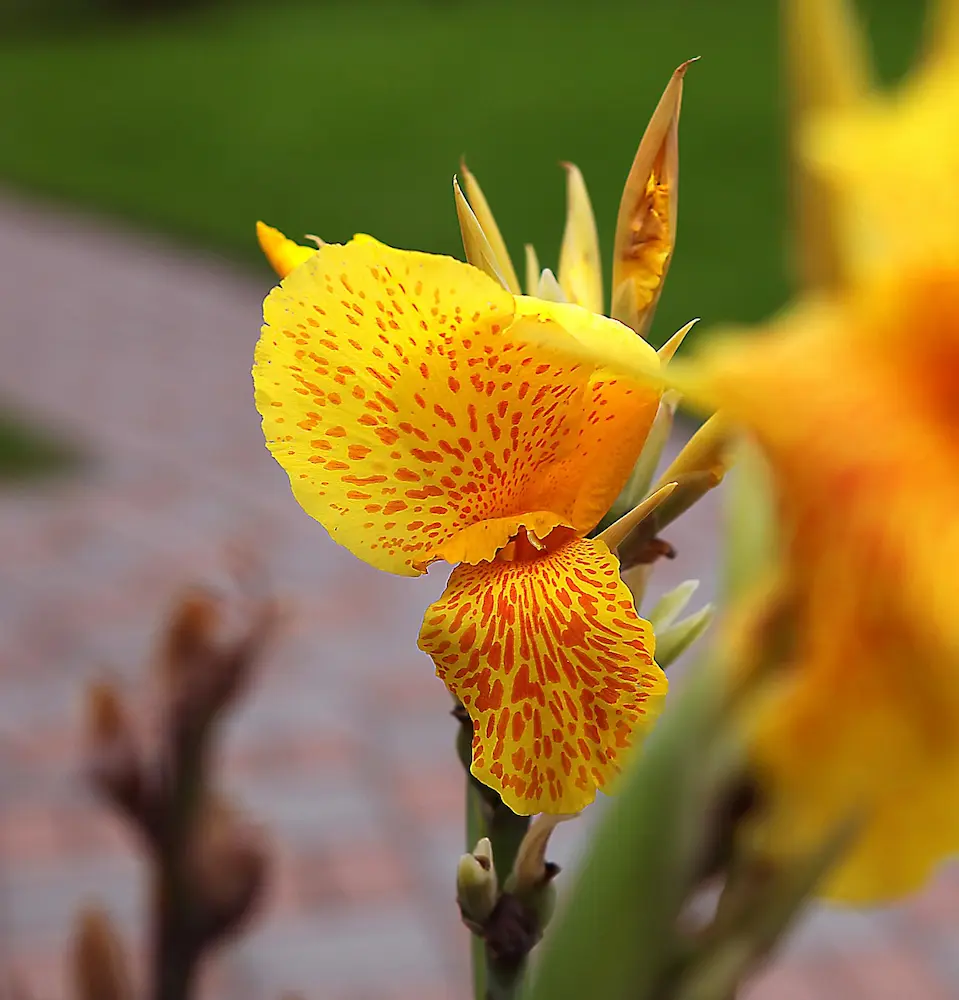
Potential Benefits, Applications, & Use Cases
In the rich tapestry of kanna’s history and application, there have been three primary use cases. It has been used for its potential medical benefits, its recreational value“, and its cultural or traditional significance. Let’s delve deeper into each of these aspects to understand the multifaceted nature of this intriguing plant.
Alternative Health Applications
The use of kanna in the medical and therapeutic fields is now slowly being explored, stemming from its traditional use as a mood enhancer. The plant contains plant chemicals that interact with the brain’s serotonin (5-HT) receptors, meaning it can help to potentially reduce anxiety and depression.
There are study data available that lend credibility to the claims that it may have potential as a natural antidepressant, and the fact that its calming effects could also aid those suffering from insomnia or other sleep disorders. There is also evidence that Zembrin, which is a form of Sceletium tortuosum that’s standardized to contain 0.35-0.45% total alkaloids with the minor ones being responsible for over 80% of this total.
Another study investigated kanna’s immunomodulatory effects, which concerns the way it may influence the immune system. The research indicated that supplementation with an extract version increased mitochondrial viability, essentially improving the health and function of mitochondria in immune cells.
Additionally, it up-regulated the release of Interleukin 10 (IL-10), an anti-inflammatory cytokine, under normal conditions. Furthermore, when these immune cells were exposed to endotoxin stimulation – a condition that typically reduces mitochondrial viability – kanna extract was able to prevent this decrease, effectively protecting the mitochondria. The study also found that it showed mild anti-inflammatory properties.
Importantly, this anti-inflammatory action did not compromise the body’s response to acute immune challenges, meaning it could potentially reduce inflammation without weakening the body’s ability to fight off infections. These results suggest the plant may be beneficial in attenuating cytokine-induced depression and systemic low-grade inflammation, contributing to overall immune health.
Recreational Uses
Recreationally, kanna is a supplement that’s used for its psychoactive properties, providing a sense of relaxation and euphoria. Users report feeling increased sociability, energy, and focus after consumption, making it popular in social settings. It can be chewed, smoked, brewed into tea, or even insufflated, offering flexibility in its method of use.

Cultural or Traditional Uses
Culturally, the plant has deep roots in South African traditions. The San and Khoikhoi people have been using the plant for centuries, both for its mood-enhancing properties, to reduce stress, and as a part of spiritual rituals.
It was traditionally consumed before big hunts, with the belief that it reduced hunger, thirst, and fatigue, while also inducing a state of calm. Today, these traditional uses continue, and the plant is often used to achieve deeper cognitive function for ceremonies and gatherings, reflecting its continued cultural significance.
The Science Behind Taking Kanna
Diving into the properties of Sceletium tortuosum opens up a fascinating world of active compounds and their interactions within the human body, Let’s unpack a little complex chemistry and delve into the scientific studies that shed light on its intriguing properties and why for some using kanna is the most preferred way to promote relaxation. and mitigate feelings of depression and anxiety.
Overview Of Its Active Compounds
At the heart of the acute effects of kanna are its active alkaloids, a group of chemicals that interact with our bodies in unique ways. These substances are believed to be responsible for its mood-enhancing properties by interacting with certain parts of our brain.
How These Compounds Interact With the Human Body
The pharmacodynamics of the active plant chemicals in kanna are beginning to be understood more fully through ongoing research. Mesembrine and mesembrenone are the two major players found in the plant. and both are believed to play a significant role in the plant’s mood-altering effects, although their individual characteristics and mechanisms of action vary.
Of the two, the first is often considered to be responsible for the majority of the mood-lifting effects. This ingredient serves as the main SSRI, or serotonin reuptake inhibitor, increasing the availability of 5-HT in the brain and potentially helping to mitigate cravings for things like pleasure eating, gambling, or other addictive behaviors.
SSRIs increase the levels of serotonin, or 5-HT, a neurotransmitter associated with mood regulation, by preventing its reabsorption into the body’s cells. Most, if not all, potential anti-hedonic effects (the potential to reduce feelings of sadness or despondency) are primarily associated with its interaction with the serotonin system in the brain.
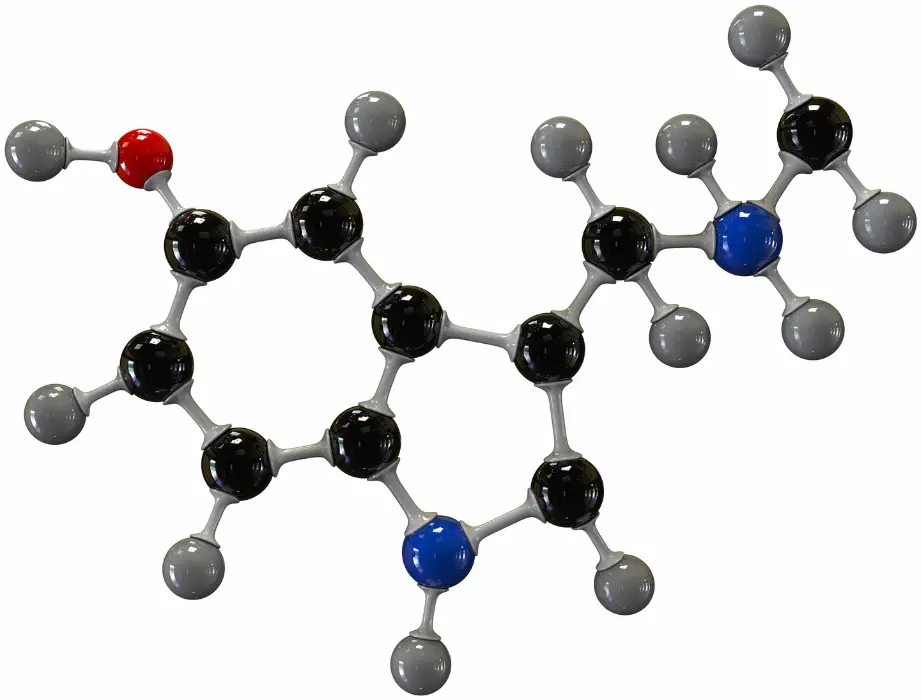
Research indicates that Sceletium tortuosum may have significant potential in managing and treating symptoms of depression. A study conducted by Terburg et al. (2013) explored the anxiolytic (anxiety-reducing) and mood-improving effects of a popular extract variety. What they found was that the chosen extract was helpful in reducing anxiety and improving mood in healthy individuals.
Mesembrenone acts as a dual 5-HT reuptake and PDE4 inhibitor. Serotonin reuptake inhibitors are commonly described for depression – think Prozac or Zoloft, for example – while the latter works by blocking an enzyme called Phosphodiesterase 4 (or PDE4 for short).
Normally, this enzyme breaks down another substance in your body, cAMP. You can think of cAMP as a messenger that carries important instructions around your body.
If a substance shows inhibitory effects on PDE4, it stops the breakdown of cAMP. This means there’s more cAMP in your body, which leads to less inflammation (when parts of your body get red, swollen, and painful) and wider airways in your lungs.
This is why medications of this type can help people with certain illnesses like COPD, a lung disease, or psoriasis, a skin condition.
They have also been associated with anti-inflammatory, neuroprotective, and antidepressant activities, suggesting that this chemical may contribute to the purported health benefits of kanna in these areas. Mesembrenol is an anxiolytic with positive mood support. However, where it has so far shown arguably the most promise is as an anti-epileptic agent.
A lesser-known aspect of these active compounds is their potential effect on the vesicular monoamine transporter 2 (VMAT2). VMAT2 is a protein responsible for shuttling neurotransmitters from the cytoplasm of a neuron into the synaptic vesicles, which are storage sites for these neurotransmitters.
Dysregulation of VMAT2 is implicated in various neurological and psychiatric disorders, including depression, schizophrenia, and Parkinson’s disease. Research indicates that mesembrine may cause upregulation of this protein. In other words, it increases the amount produced by the system.
Research suggests that this upregulation could be a therapeutic strategy for treating disorders such as depression, where there is typically reduced VMAT2 activity. The increase in systemic VMAT2 could enhance monoamine function and potentially counteract depressive symptoms.
Even though this plant is not a newcomer to the herbal remedy scene, its exact pharmacology is still not fully understood. However, it’s clear that its effects are likely due to a combination of these alkaloids interacting with various systems in the brain.

It’s important to note that while in vitro studies provide valuable insight, they don’t always translate directly to effects in humans. More research is needed to fully understand the pharmacodynamics of these compounds and how they contribute to the overall user experience.
Summary of Scientific Research on Kanna
A growing body of research has begun to explore how kanna can help pharmacologically and its potential applications. In a study published in the Journal of Ethnopharmacology, researchers conducted a review of the historical, ethnobotanical, and phytochemical aspects of the plant and performed and investigation into its psychopharmacological properties.
The study concluded that it does indeed have diverse effects on the central nervous system, corroborating anecdotal reports of its mood-enhancing properties. A separate study published in the Journal of Natural Products delved deeper into the pharmacological effects of its main component, and the researchers we able to confirm previous findings that this chemical compound acts as an SSRI.
This reinforced previous theories about the compound’s role in the overall effects people feel. It’s important to note, however, that this study was carried out in vitro, not in humans or other mammals.
It’s clear that while research into the chemicals mentioned above is in its early stages, the findings so far are promising. As our understanding of this intriguing plant and its effects expands, there is potential for further exploration into its therapeutic applications in the realm of mental health.
Fermentation
Fermentation is a traditional practice that has been passed down through generations. The main reason for this practice is to enhance the mind-altering experience a user enjoys. According to a study published in 2014, this process helps in the conversion of the plant’s effective components into more effective forms.
Fermentation involves a few steps. Traditionally, the harvested plant material is crushed and placed in a sealed container to ferment. This process, which can take up to a week, involves the breakdown of the plant’s organic compounds by microorganisms. In modern times, the process might be accelerated using controlled conditions to ensure optimal microbial activity.
It’s worth noting that the fermentation process must be carefully managed to prevent the growth of harmful bacteria or mold. There have been additional scientific findings to validate the claim that fermentation alters composition.
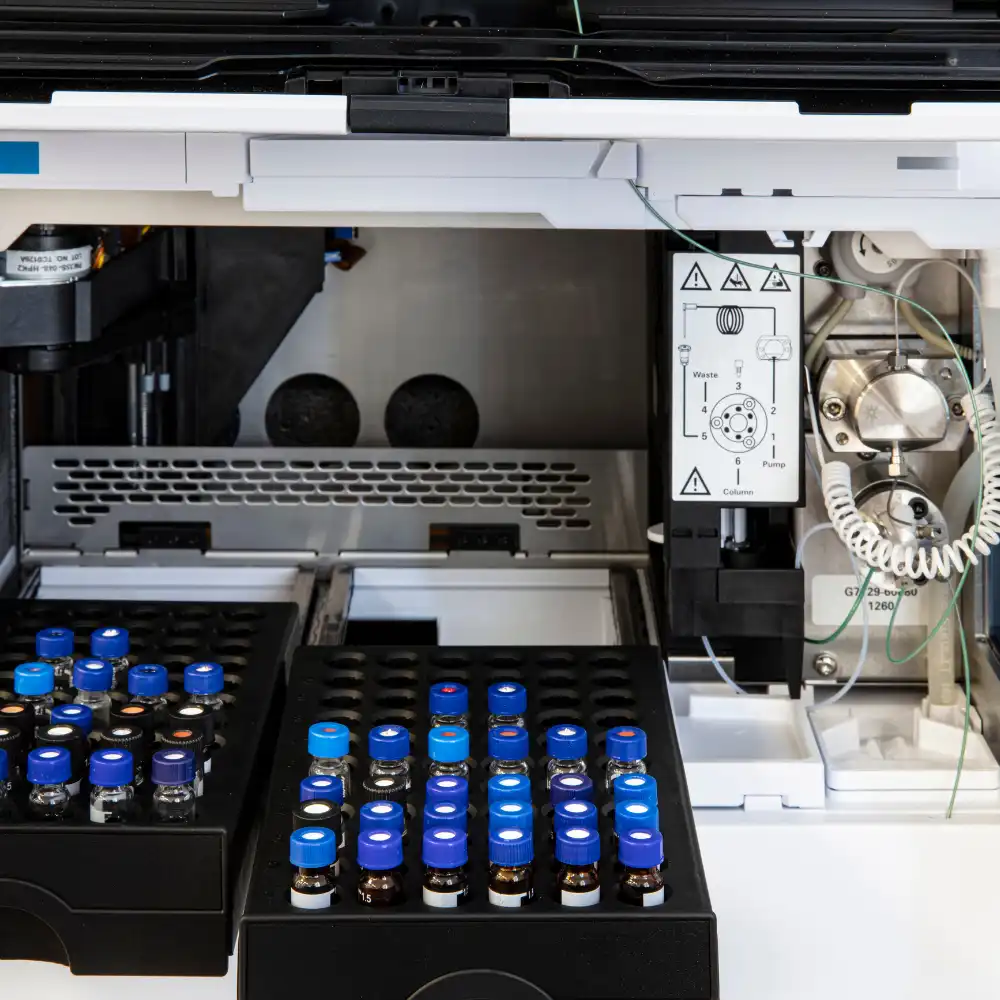
A study in the Journal of Ethnopharmacology noted that fermentation leads to the conversion of mesembrine into the more psychoactive mesembrenone through a so far unknown mechanism. This transformation significantly impacts the plant’s effects, enhancing its calming and mood-boosting properties.
Despite the conclusions made by the previous researchers, not everyone was certain this was always the case and some questioned the validity of the methods used. In 2019, Chen and Viljeon sought to verify things. The researchers used a validated Ultra-Performance Liquid Chromatography with Photodiode Array (UPLC-PDA) method to quantify the chemical makeup of kanna both before and after fermentation.
These experiments yielded the opposite of what was found in the studies mentioned above. Mesembrine increased 6.5-fold in one sample to nearly 35-fold in another, while mesembrenone only dropped significantly in one case. More studies need to be done before we can draw a certain conclusion from these mixed findings.
Legal Status
As of the time of this writing, kanna is legal in the United States and is not included on any list of scheduled or controlled substances at the state or federal levels. The only exception to this is the state of Louisiana, which has specific regulations against it.
Worldwide, the plant remains legal to grow, sell, trade, and buy in the majority of the world however, some countries may have specific regulations regarding extract versions requiring a prescription.
Even though there are no U.S. states outside of Louisiana that have specifically banned it, it’s important to note that its legal status may change over time. Effective natural remedies negatively impact the profit potential of the prescription drug industry not just by reducing the number of prescriptions that must be written. but also by correcting the root cause of issues so patients don’t have to schedule so many appointments in the future.
Sceletium tortuosum Dosage and Consumption Methods
When choosing a route of administration for any chemical, some key concerns are efficiency, speed of onset, and duration of the desired effects. Absorption and bioavailability are two critical concepts in pharmacology that determine how a drug or medication behaves in the body after administration.
Absorption
Absorption refers to the process by which the drug travels from the site of administration into the systemic circulation. The efficiency of absorption often depends on the route of administration.
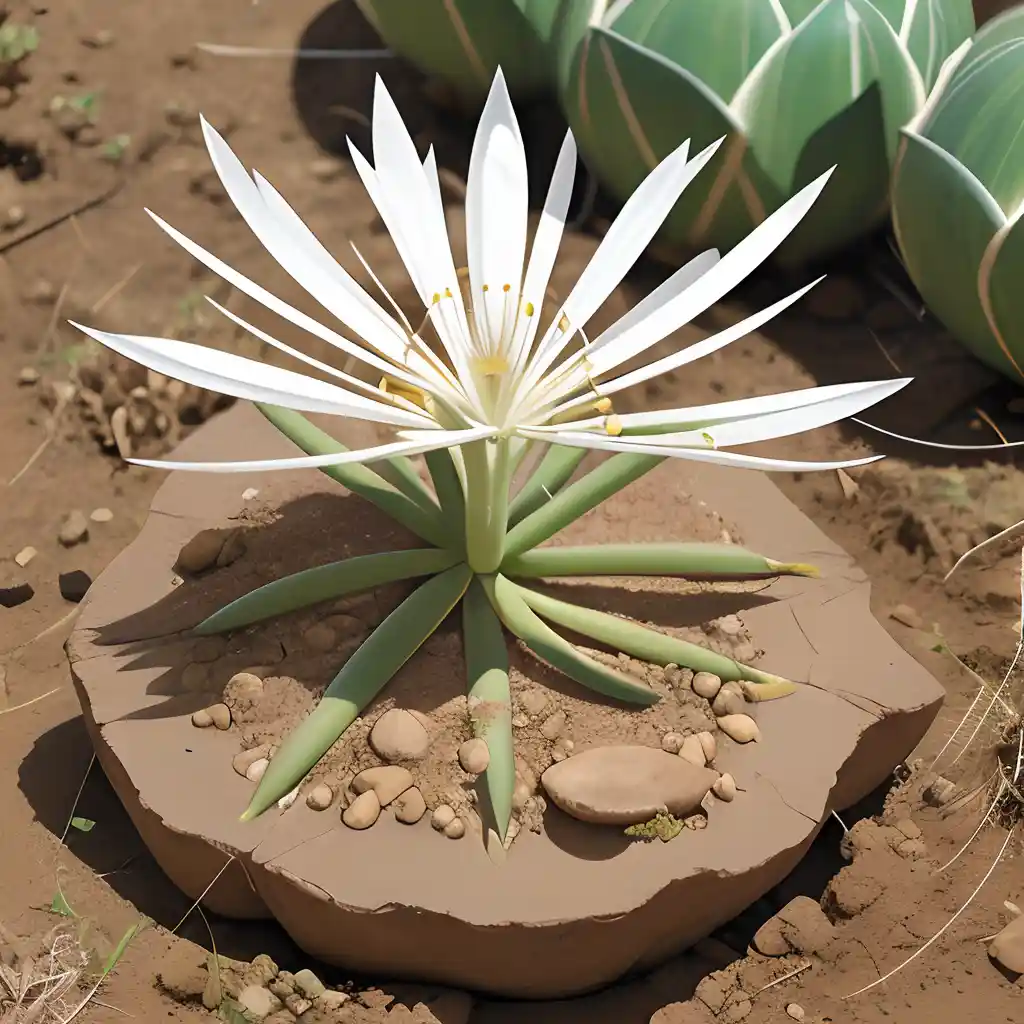
For instance, drugs administered orally must survive the harsh environment of the stomach, be absorbed by the intestines, and then pass through the liver (a process known as first-pass metabolism) before reaching the systemic circulation.
Bioavailability
Bioavailability, on the other hand, measures the proportion of the administered drug that actually reaches systemic circulation in an unchanged, or active form. This is a crucial concept, as it determines the effective dose of a drug.
When it comes to alkaloids in kanna, these compounds can be administered in various ways, each with different absorption and bioavailability profiles. Oral ingestion, sublingual administration (under the tongue), and inhalation are common routes.
Oral ingestion tends to have lower bioavailability due to first-pass metabolism, while sublingual administration allows for direct absorption into the bloodstream, bypassing the digestive system and therefore increasing bioavailability.
Inhalation also offers high bioavailability because the drug is absorbed directly into the bloodstream through the lungs, avoiding first-pass metabolism.
However, the specific absorption and bioavailability of alkaloids in kanna can vary depending on numerous factors, including individual physiology, the specific alkaloid in question, and the preparation of the end product.
Therefore, it’s important to note that these are general observations and individual experiences may vary.
Choosing a Route of Administration (ROA)
Kanna can be consumed in a variety of ways, each having different absorption rates and bioavailability. The most popular methods include snorting, vaping, and brewing it into various beverages. Its leaves can also of course be chewed.
Chewing has been a popular method of consumption in its native regions, offering a nearly immediate, robust effect. It also allows for the direct absorption of the active compounds through the oral mucosa, which may enhance its bioavailability.
Snorting the powder involves consuming very finely ground powder. This method tends to produce effects rapidly, due to the high vascularization of the nasal cavity enhancing absorption.
Smoking and vaping are other common methods. While research on these specific methods is limited, inhaling a plant’s chemicals into the lungs typically allows for quick absorption into the bloodstream.
Brewing it as a drink is a popular choice for those seeking a more gradual and prolonged effect. The warmth of the liquid may help in extracting the active compounds, enhancing their availability when consumed.
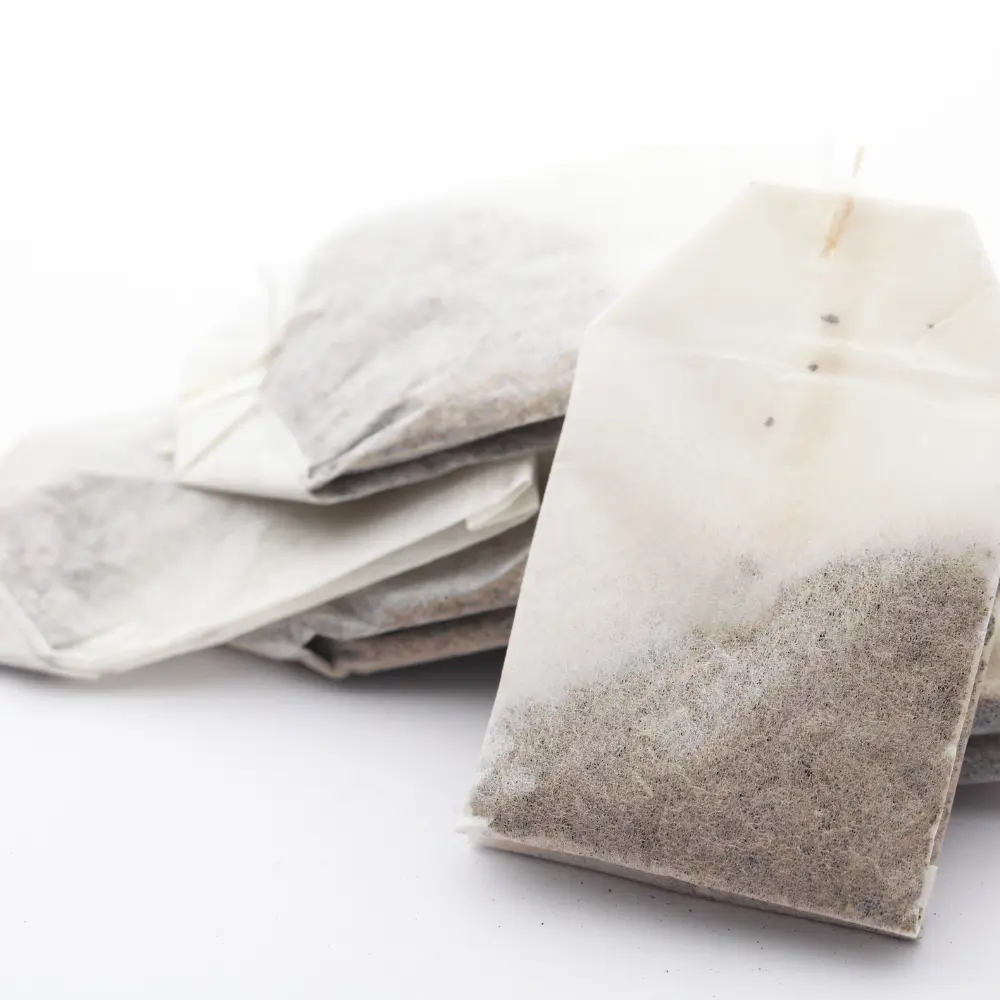
In addition to these methods, kanna can also be added to food and drinks in its powdered form, or taken sublingually (under the tongue). Each method carries its own unique set of effects and considerations, allowing individuals to choose the one that best fits their needs.
Suggested Use
Getting your dose right can be tricky as it depends on several factors including the ROA, individual tolerance levels, and desired effects. It’s always best to start with a lower dose and gradually increase if necessary.
Here are some general guidelines for various routes of administration:
- Chewing: Typically, 100-200 mg of dried leaves are ground between the teeth over an extended period. The effects can last up to two hours.
- Snorting: Users should take less if snorting due to rapid absorption. A starting dose could be around 30-50 mg.
- Vaping/Smoking: Vaping and smoking both allow for quick absorption, so most use around the same amount as when snorting, starting from 20-50 mg.
- Tea: When brewed as tea, around 15-200 mg of kanna is used. This method provides a more gradual and prolonged effect.
- Sublingual: Placing the leaf product under the tongue allows for direct absorption into the bloodstream. Start with a dose of 50-150mg.
Remember, these are general guidelines and each individual’s response may vary.
Notes on Kanna Extract Products
It’s important to pay special attention to whether you are using standard or fermented powder or Sceletium tortuosum extract. Extracts are simply more highly concentrated versions – sometimes much higher.
As with any dietary supplements or herbal products you may take, you want to look for a product that is standardized for a specific percentage of alkaloids. While one study found standard kanna to contain around 0.1-1.99% total alkaloids naturally, the most powerful kanna extracts can contain several times more than that.
If you are switching to an extract from the standard stuff, you will have to experiment to assess your tolerance. Start low and work up only as needed. Here are some general guidelines for various routes of administration using a 4% alkaloid extract as an example.
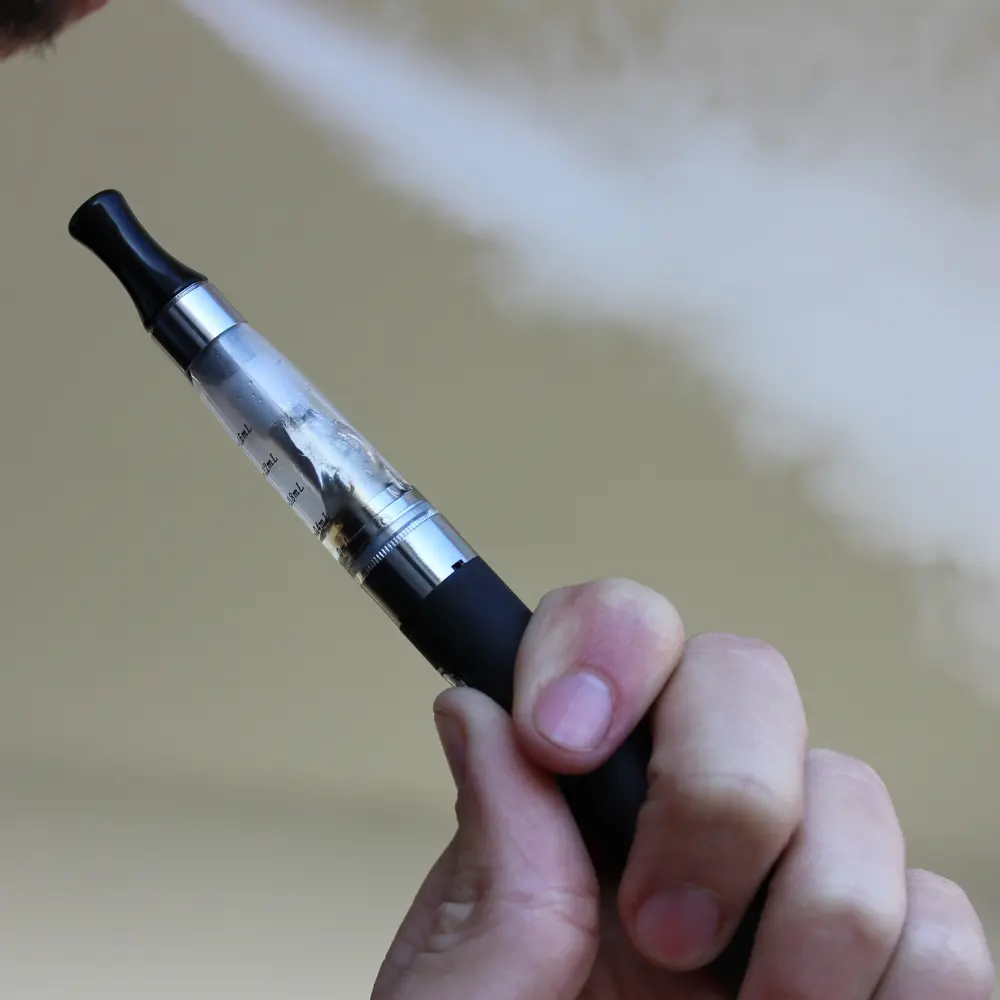
- Chewing: Not recommended with extract powders as the volume of powder is too small to effectively use this way
- Capsule form: Take one or two orally. This is based on each one containing 30 mg of extract.
- Tea: Start with 30-40 mg dropped into whatever tea leaf brew you like. It is expensive for most to reach their target experience with this method as absorption rates are the lowest of other options.
- Snorting: This is a popular method that requires as little as 10-15 mg due to the high rate of absorption within the nasal cavities. Effects are felt quicker and are more intense, but they do not last as long as with oral methods.
- Vaping/Smoking: These routes are also faster, harder, and shorter, and involve roughly the same amounts as snorting
- Sublingual: Placing extract under the tongue allows for direct absorption into the bloodstream. If you are set on taking it orally, this is the best way. Start with a dose of 15-50 mg.
Please remember that these are only general guidelines and individual responses to extracts and each product’s individual concentration may vary. Always start low and go slow.
Kanna Side Effects and Risks
At present, there’s no concrete evidence to suggest that the use of kanna is either harmful or addictive. To put it in perspective, a scientific study was conducted in which rats were given a daily dosage of 5,000 mg/kg for two continuous weeks, and no adverse effects were reported.
If we were to translate this dosage into a human equivalent dose for a 180 lb person, it would amount to approximately 66 grams per day. Considering the typical consumption patterns, such a quantity of kanna is practically unimaginable.
Another study carried on for three months used a smaller amount but the results were the same. It’s important to note there are very small amount of available study data and more research is needed to have 100% confidence in these findings. Much longer experiments would go a long way to establish long-term effects.
As with any substance, kanna is not necessarily suitable for everyone. There are several contraindications to consider before choosing to use it. First, individuals who are currently on psychiatric medications, particularly SSRIs or MAOIs (monoamine oxidase inhibitors), should refrain from using it as there are potential dangers to consider.
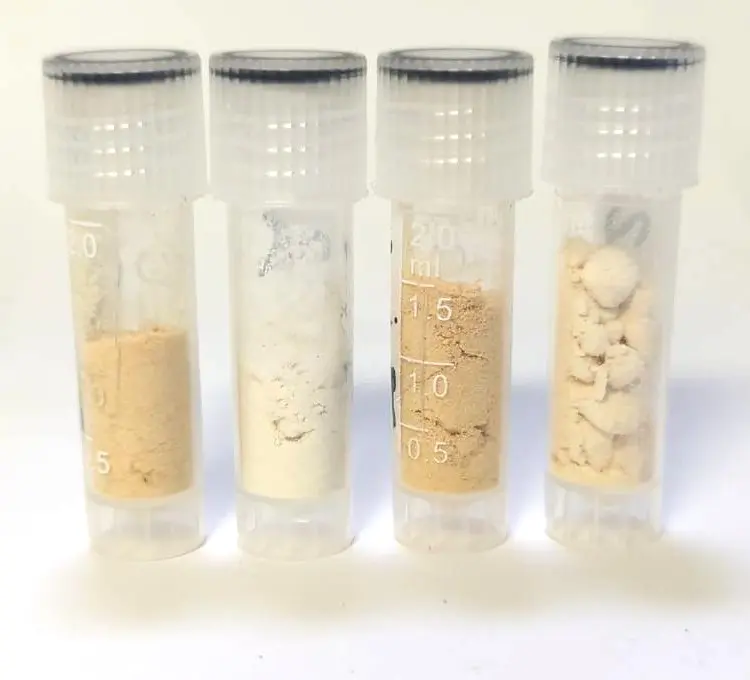
This is due to the way the plant’s chemicals may reach the serotonergic system. Such a mixture could potentially lead to a condition known as serotonin syndrome. Second, those with a history of heart conditions should also exercise caution as certain combinations may cause palpitations or changes in heart rhythm.
Pregnant or nursing women should avoid kanna as there is a lack of scientific evidence to support its safety during these periods. Until there are more findings available, it may be wise to avoid use while breastfeeding as well.
Oxalates in Kanna
Oxalates are organic compounds found in various plant foods. While small amounts of oxalates are harmless and can be handled by the human body, a high concentration in sensitive people can lead to the formation of kidney stones.
This is because oxalates bind with calcium in the kidney to form crystals, which gradually aggregate into larger stones. At high doses for long periods, these oxalates need to be neutralized before consumption to prevent any potential health risks.
This is achieved by either fermentation or heat treatment. Fermentation is a traditional method that utilizes bacteria to break down the oxalates in kanna. The process involves soaking the plant material in water for a period, during which the bacteria naturally present in the plant initiate the fermentation process.
This not only reduces the oxalate content but also enhances the bioavailability of the active compounds in it. Heat treatment, on the other hand, involves heating the kanna to high temperatures, which causes the oxalates to decompose into harmless compounds.
This method is quicker than fermentation, but care must be taken not to overheat the material as it can lead to the degradation of the active compounds. Either way, this is an important step you don’t want to miss if you are using raw plant material and you’re sensitive to dietary oxalates.
Known Drug Interactions
Kanna can interact with various drugs, leading to adverse effects. Below is a list of known major and moderate drug interactions as per the checker at Drugs.com:
Major Interactions
- Selective Serotonin Reuptake Inhibitors (SSRIs): kanna may enhance the serotonergic effect of SSRIs, leading to a potentially life-threatening condition known as serotonin syndrome
- Serotonin-Norepinephrine Reuptake Inhibitors (SNRIs): Similar to SSRIs, combining it with SNRIs may increase the risk of serotonin syndrome
- Monoamine Oxidase Inhibitors (MAOIs): Kanna and MAOIs both impact 5-HT levels, and their combined use may potentially lead to serotonin syndrome
- Triptans: Combining this sort of migraine medication can also increase the risk of serotonin syndrome

Moderate Interactions
- Tricyclic Antidepressants (TCAs): While not as severe as with SSRIs or MAOIs, there may be interactions withTCAs, leading to increased serotonin levels
- Benzodiazepines: It may potentially amplify the sedative effects of benzodiazepines, leading to excessive drowsiness or lethargy and unfavorable cognitive effects
- Opioids: Similar to benzodiazepines, it may enhance the sedative effects of opioids
This list is not exhaustive, and other interactions may occur. Check with a doctor, pharmacist, or drug interaction database before using any new substance if you are taking any prescription medications.
If you are being treated for, or even think you may have, any preexisting conditions of any kind, it’s a good idea to go over these things with a medical doctor before trying a new substance.
Conclusion
In conclusion, kanna, scientifically known as Sceletium tortuosum, is a South African succulent plant that has been used for centuries for its medicinal and psychoactive properties. Its effects are best described as anxiety and stress relief along with antidepressant properties.
The plant contains chemicals that interact with the body’s neurochemistry, and its beneficial effects are likely attributable to its ability to alter activity in the amygdala, a part of the brain that contributes to increasing serotonin levels in a particular part of the brain.
It is typically taken orally as cut or ground leaf or, when in extract form, smoked, vaped, snorted, or held under the tongue for an extended period. Usage amounts vary, but it’s crucial to highlight that no harmful effects have yet been observed even with high doses.
However, as with any substance, potential side effects can occur, underscoring the importance of responsible usage. Despite its long history of use, more scientific research and clinical studies would go a long way to help us fully understand kanna and its potential benefits and risks. Remember to use everything in moderation and listen to your body.


Latest from our blog
Please Read….This is Urgent
In loving memory of Ryan, a special individual who recently passed away, we honor his [...]
Damiana Exposed: Special Look At Turnera diffusa (2023)
Damiana Exposed: Special Look At Turnera diffusa (2023) Damiana is a wild shrub native to [...]
Kanna: A New Look At An Exciting Mood Booster (2023)
What is kanna? Some say the botanical has similar effects to MDMA, or ecstasy. Others [...]
Blue Lotus Flower: Unveiling Its Mystical & Therapeutic Powers
To cut to the chase and pickup potent 25x blue lotus extract today while enjoying [...]
Red Bubble Kratom Extraction: A Comprehensive Guide
As a kratom enthusiast, have you ever wondered if there was a method for getting [...]
Aug
Maeng Da Kratom 101: Accurate Info You Can Trust
Maeng Da kratom may be the most popular kratom strain on the market today. The [...]
Aug